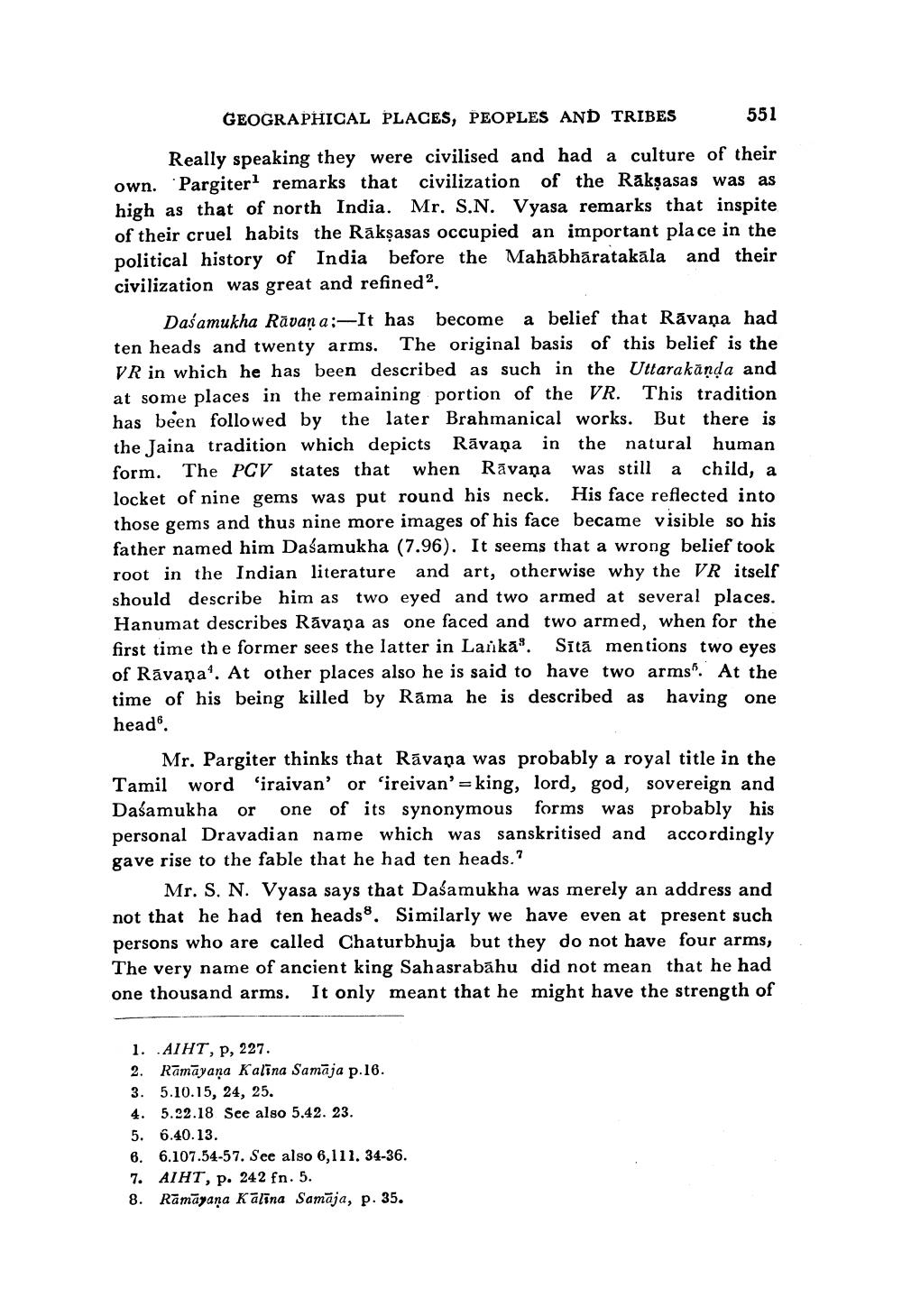________________
GEOGRAPHICAL PLACES, PEOPLES AND TRIBES
551
Really speaking they were civilised and had a culture of their own. Pargiter remarks that civilization of the Raksasas was as high as that of north India. Mr. S.N. Vyasa remarks that inspite of their cruel habits the Raksasas occupied an important place in the political history of India before the Mahabharatakāla and their civilization was great and refined?
Dasamukha Rāvana:-It has become a belief that Rāvana had ten heads and twenty arms. The original basis of this belief is the VR in which he has been described as such in the Uttarakända and at some places in the remaining portion of the VR. This tradition has been followed by the later Brahmanical works. But there is the Jaina tradition which depicts Rāvana in the natural human form. The PCV states that when Rāvana was still a child, a locket of nine gems was put round his neck. His face reflected into those gems and thus nine more images of his face became visible so his father named him Dasamukha (7.96). It seems that a wrong belief took root in the Indian literature and art, otherwise why the VR itself should describe him as two eyed and two armed at several places. Hanumat describes Rāvana as one faced and two armed, when for the first time the former sees the latter in Laikas. Sītā mentions two eyes of Rāvana". At other places also he is said to have two arms". At the time of his being killed by Rāma he is described as having one head.
Mr. Pargiter thinks that Rāvana was probably a royal title in the Tamil word 'iraivan' or 'ireivan'=king, lord, god, sovereign and Dasamukha or one of its synonymous forms was probably his personal Dravadian name which was sanskritised and accordingly gave rise to the fable that he had ten heads.?
Mr. S. N. Vyasa says that Dasamukha was merely an address and not that he had ten heads. Similarly we have even at present such persons who are called Chaturbhuja but they do not have four arms, The very name of ancient king Sahasrabāhu did not mean that he had one thousand arms. It only meant that he might have the strength of
1. AIHT, P, 227. 2. Rāmāyaṇa Kalina Samāja p.16. 3. 5.10.15, 24, 25. 4. 5.22.18 See also 5.42. 23. 5. 6.40.13. 6. 6.107.54-57. See also 6,111. 34-36. 7. AIHT, p. 242 fn. 5. 8. Rāmāyana Kalina Samāja, p. 35.




